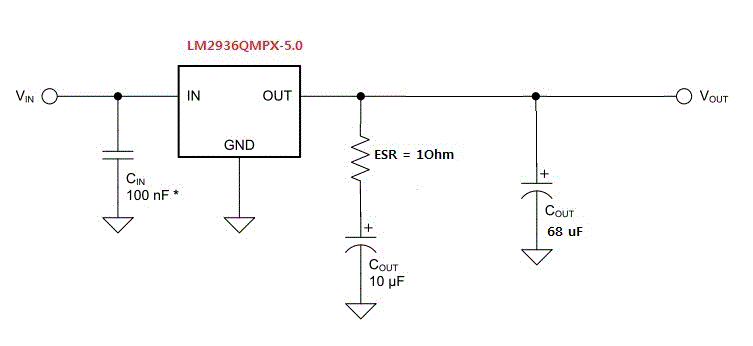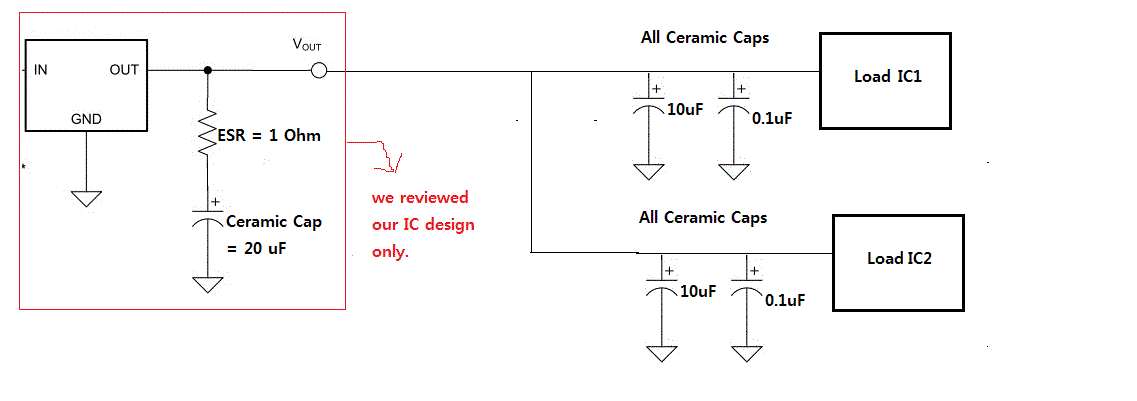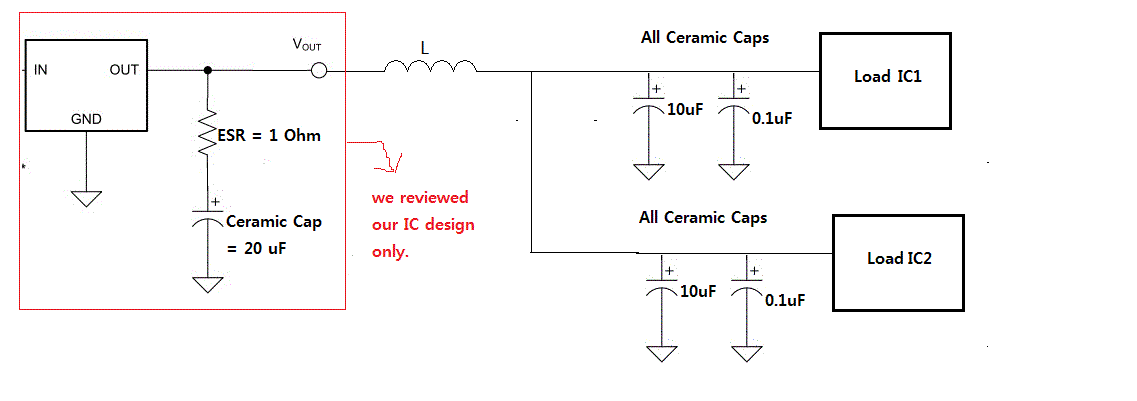hi team
LM2936-Q1-5.0 need at least 10uF with ESR 0.3Ohm ~ 8Ohm for stability.
BTW,,, customer made the board as below; 10uF with External ESR = 1 ohm, and 68uF with no external ESR.
it seems the board will make unstable.
my questions are...
[Q1] what is max cout with ESR 0.3Ohm ~ 8Ohm for safe stability for LM2936-Q1-5.0 ?
[Q2] such customer configuration(10uF with External ESR = 1 ohm, and 68uF with no external ESR) can meet stability ?
if not, tell me why and how to improve the stability ?





